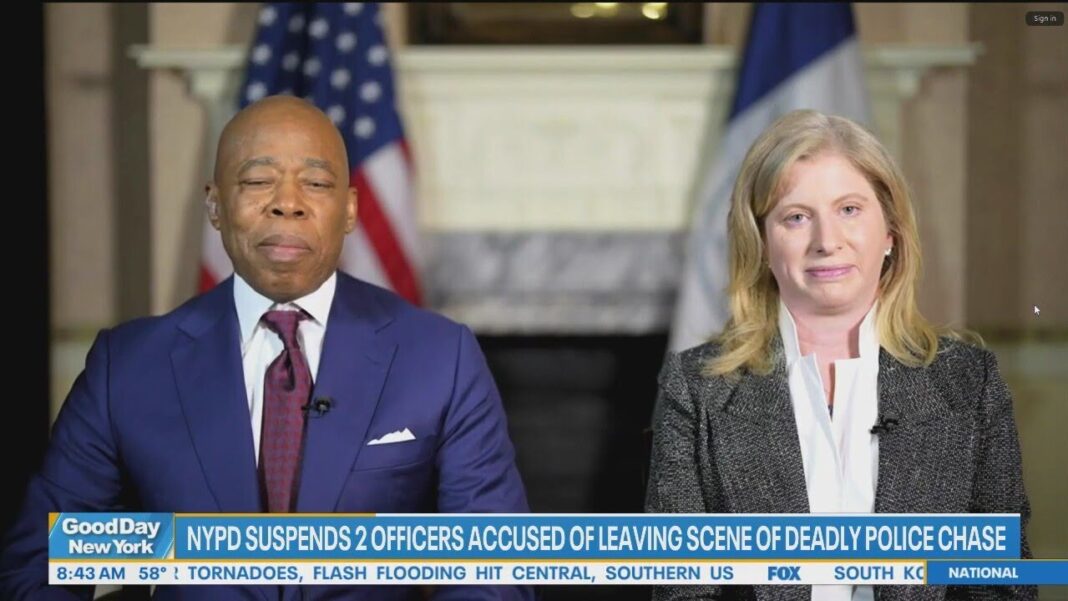|
Getting your Trinity Audio player ready...
|
Subway Crime Drops, But Assaults Persist: Experts Urge Caution Amid Celebratory NYPD Stats
Edited by: Fern Sidman
New York City subways are seeing a long-overdue break from the crime wave that gripped the system in recent years, with transit crime dropping below pre-pandemic levels for the first time — a development that officials are calling a milestone moment. During a press conference on Thursday, NYPD Commissioner Jessica Tisch hailed the success of an aggressive law enforcement deployment strategy that she says has helped drive the crime reduction.
According to a report on Thursday in The New York Post, major crimes in the transit system have dropped 18% in the first quarter of 2024 compared to the same period last year. That marks the second-lowest level in 27 years, and—most strikingly—there were zero murders in the subway system during the first three months of the year, the first time that’s happened since 2018.
“When we announced this plan alongside the mayor back in January, we promised real results, and boy did we get them,” Tisch said, flanked by Mayor Eric Adams, as the two unveiled the NYPD’s latest quarterly crime statistics.
The drop in crime follows a turbulent period during which New Yorkers increasingly feared for their safety on the subways. According to the report in The New York Post, the tipping point came after a series of headline-grabbing incidents—including a woman being fatally set on fire inside a Brooklyn train car—that left many commuters shaken and reluctant to use the system.
In response, Tisch unveiled a comprehensive transit safety plan in January, which included deploying 200 additional officers directly onto trains and platforms. That was coupled with hundreds more officers stationed at key transit hubs, reinforcing a parallel state plan led by Governor Kathy Hochul, which required two officers on every overnight train.
The result? A noticeable change not just in statistics—but in perception.
Commuters are already noting a tangible improvement in their daily experiences. Carol Sparks, 69, a newborn care specialist from Flatlands, Brooklyn, told The New York Post she now feels more secure during her five-day-a-week commute.
“The subway feels a lot safer,” Sparks said while waiting at the Wall Street station. “There’s not as much abuse or people disturbing you. More police is the answer. When there are more police, the subway is safer.”
Even tourists are taking notice. Laci Komula, a 36-year-old visitor from Louisville, Kentucky, said she arrived in New York with anxiety over what she had heard about the subway—but was surprised to find a much calmer reality.
“We haven’t had any issues whatsoever on the subway or walking around,” Komula told The Post, noting that she and her two sons, ages 9 and 12, had taken the subway throughout the city. “It feels like the fear has really gone down.”
Despite the celebratory tone from city officials, The New York Post report was careful to note that the transit crime statistics may contain significant caveats. For one, experts warn that public perception can swing quickly—and fear tends to linger longer than the data shows. While homicides and assaults may be down, lower-level crimes like theft, harassment, and quality-of-life offenses often go underreported or fluctuate based on enforcement visibility.
In addition, some skeptics argue that a surge in police presence—while effective in the short term—may not address the root causes of subway crime, particularly those tied to homelessness, mental health issues, and economic instability.
City officials, however, argue that this isn’t just a temporary patch.
“We’re not just throwing cops at the problem,” one NYPD source told The Post. “There’s a strategy behind every deployment. We’re trying to make the subway a place where people feel safe again—because that’s the only way they’ll keep using it.”
The dramatic decline in transit crime is also a potential political victory for Mayor Eric Adams, who has made public safety a cornerstone of his administration. With poll numbers battered by economic concerns, housing crises, and migration issues, a well-documented win on subway safety gives Adams a boost heading into the heart of the city’s election season.
The former NYPD captain has consistently emphasized “boots-on-the-ground” policing as the answer to urban safety challenges. Speaking alongside Tisch on Thursday, Adams echoed that message, as was noted in The New York Post report.
“This is what public safety looks like when government agencies coordinate and commit,” Adams said. “The people of New York are seeing results—not just in data, but in their lived experience.”
One of the most important contextual factors involves ridership. According to Metropolitan Transportation Authority (MTA) data cited by The Post, March 2024 ridership stood at approximately 111 million—a notable 23% decrease from the same month in 2019, the last full pre-pandemic year. This means that fewer people are riding the subway overall, making it difficult to compare crime statistics on a one-to-one basis with pre-COVID years.
If there are fewer commuters underground, a drop in total crime incidents might not necessarily reflect a proportional improvement in safety. Some analysts argue that the rate of crime per rider is just as critical—if not more so—than total figures.
While overall subway crime is down, felony assaults have been steadily climbing—a trend that long predates the pandemic. Criminologist Aaron Chalfin, an associate professor at the University of Pennsylvania and graduate chair of its criminology department, has analyzed subway crime patterns over the past decade. As he explained to The New York Post, felony assaults in the subway system have tripled between 2009 and 2023.
So far this year, NYPD data shows 144 felony assaults in the subway system—essentially unchanged from this time in 2023. But when measured over a longer window, the increase is stark: felony assaults are up 6.7% from 2022 and a staggering 54.8% higher than in 2019.
“This is basically a continuation of what we have seen in our research,” Chalfin told The Post. “Robbery has been declining over the long term, but assaults—especially serious assaults—are rising.”
Chalfin cautioned against interpreting the NYPD’s encouraging overall crime numbers without this broader context. “The decline in overall subway crime is notable and should be understood alongside a long-term increase in assaults underground that predates the pandemic,” he said. “The context continues to be important.”
Even with more officers patrolling the system, not all riders are reassured. Simone Marshall, 27, a content producer and “occasional influencer,” told The New York Post that she appreciates the numbers but doesn’t necessarily feel safer.
“I’m a short, single woman, so I never feel safe in the subway,” Marshall said. “Of course I am happy to hear subway crime is down. I have definitely noticed a lot more cops in the stations, but correlation does not equal causation.”
Marshall’s remarks reflect a broader tension in the city’s public safety narrative: While statistics might signal progress, they don’t always translate to trust or confidence among New Yorkers, especially among women, seniors, and vulnerable communities who often feel most at risk during commutes.
Despite the data’s nuances, MTA Chair and CEO Janno Lieber celebrated the drop in overall subway crime, calling it a positive sign that collaborative efforts across city and state agencies are yielding results.
“As we have been saying all year, the steps that the Governor, City Hall, the NYPD, and the MTA have taken are working and making the system safer,” Lieber said in a statement to The New York Post. “Indeed, crime numbers have been driven down to record lows. And we’re not finished. We will always continue to fight to make sure that crime keeps going down and we will continue working with District Attorneys to make sure that anyone committing a crime is held accountable.”
While city leaders have every reason to celebrate progress in crime reduction, The New York Post’s report indicated that crime data must be read in context. The subway system is statistically safer now than in recent memory—but when broken down by crime type and considered against ridership levels, the picture is far more layered.
The persistence of felony assaults in particular signals that serious safety concerns remain, even as murder and robbery decline. And for everyday straphangers—especially women and solo riders—perceived safety is often as vital as the raw numbers.




